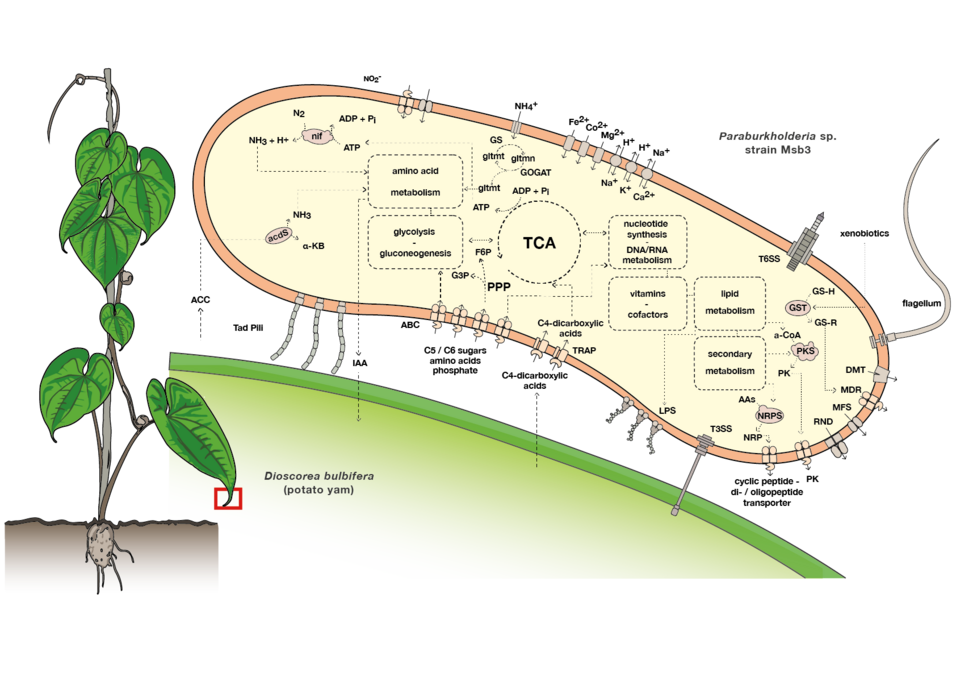02.05.2020
Johannes B. Herpell and colleagues from the Weckwerth group found that the Betaproteobacterium Paraburkholderia sp. strain Msb3 exhibits significant growth promotion when applied to agriculturally important plants such as tomato, increasing the total dry biomass by up to 40%. The strain was isolated from leaves of the potato yam, Dioscorea bulbifera, with witch it was shown to engage in a stable long term symbiotic relationship.

